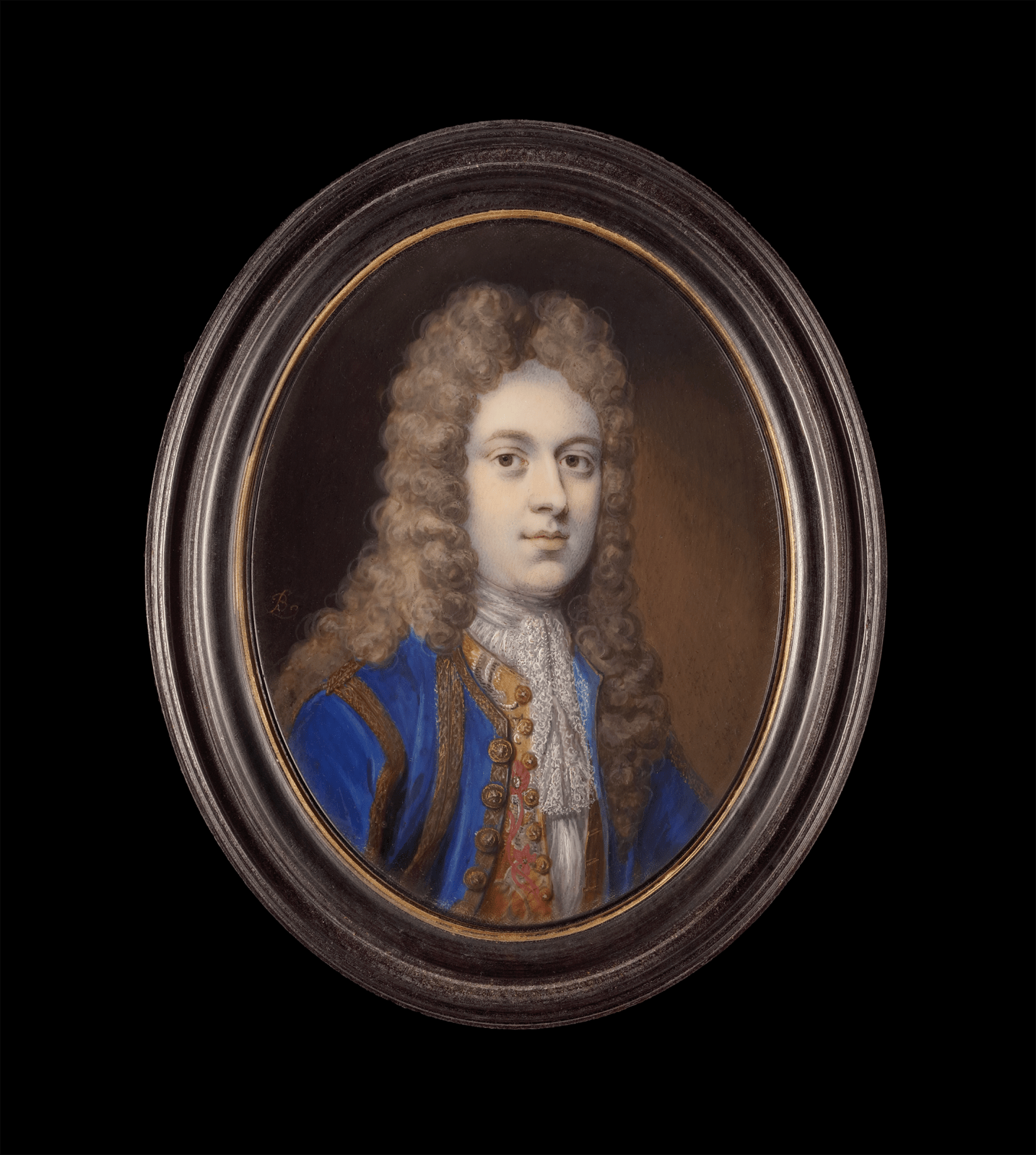
Bernard Lens
To view all current artworks for sale visit philipmould.com
There appears to be a second version of this portrait at the National Trust property of Sheringham Park, Norfolk, where the sitter wears a wig of a darker colour but the same waistcoat and coat. Sheringham Hall was designed by the son of Humphry Repton, John Adey, commissioned by Abbott Upcher and his wife Charlotte, possibly descendants of the sitter in the current portrait.
The artist, Bernard Lens, was a central figure in the London art world in the early 18thcentury. He was a multi-faceted man, being drawing master, artist and dealer. He was also a pioneer of the use of ivory as a support for watercolour miniatures, replacing vellum as the surface to which watercolour was applied. Vertue listed him as one of the original subscribers to Kneller’s Academy and he achieved considerable reputation as a miniaturist holding Royal Appointments in this capacity under both George I and George II.
Lens worked as both traditional ‘limner’, consciously following his predecessors who enjoyed International reputations, such as Nicholas Hilliard from the 16thcentury and Samuel Cooper from the 17thbut also as a successful copyist. Like the much-prized cabinet miniatures painted in the 17thcentury by artists such as Isaac and Peter Oliver, Lens painted miniaturised copies after the great artists from aristocratic collections. The simple stained black pear-wood frames he produced to house these watercolours from John Hervey, 1stEarl of Bristol’s collection are still known today as 'Lens frames'. In this capacity he was also able to advise on and curate collections, acting as agent for some of the great connoisseurs of the age.
The current portrait is typical of Lens’ work at the height of his career. Much in demand as an innovator and well-connected, he also trained other artists such as Catherine da Costa, the first English Jewish artist.
Provenance
Previously with Ellison Fine Art;
Private Collection, UK.
Be the first to hear about our available artworks
* denotes required fields
We will process the personal data you have supplied in accordance with our privacy policy (available on request). You can unsubscribe or change your preferences at any time by clicking the link in our emails.